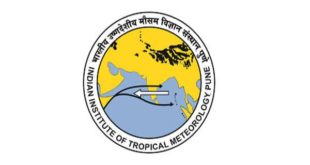Major nations continue to advise their citizens against travelling to the Valley; against 13 lakh tourists in 2016, the first six months of 2019 recorded just 3.54 lakh
Even five months after the Pulwama attack, major Western countries continue to advise their citizens against travelling to the Kashmir Valley, affecting the State’s tourism-reliant economy severely. France, Germany, Canada, Australia, the U.K. and the U.S., from which high-spending tourists used to visit the scenic valley, have decided to maintain their advisories on Kashmir at the “highest danger” level. “Do not travel to: The state of Jammu and Kashmir (except the eastern Ladakh region and its capital, Leh) due to terrorism and civil unrest, ” the U.S. State Department said in its travel advisory dated March 8 and posted on its website. It urges American citizens to avoid travel to “within 10 km of the India-Pakistan border due to the potential for armed conflict”. The U.K.’s Foreign and Commonwealth Office advised against all travel to: “Jammu and Kashmir, with the exception of (i) travel within the city of Jammu, (ii) travel by air to the city of Jammu, and (iii) travel within the region of Ladakh”. The office, which regularly updates its advisories, explained the rationale for its curbs on travel to the State by saying: “Following a terrorist attack in Pulwama on 14 February, there are heightened tensions between India and Pakistan, particularly across the Line of Control. There may be disruption to air travel in Jammu and Kashmir and northern India at short notice.” It warns that terrorists are “very likely to try to carry out attacks in India”. “There have been recent media reports suggesting Daesh (formerly referred to as ISIL) may have an interest in attacking targets in India,” it says. There are similar advisories from Canada, France and Germany, which, in the past, had lowered the danger level on its travel advisories to “green” for Srinagar and “orange” for the Valley. An official said France had categorised Srinagar as “green” (free to go) for its citizens immediately after the five-month agitation in 2016. Against 13 lakh tourists who travelled to Kashmir in 2016, the first six months of 2019 recorded just 3.54 lakh. “The strict security measures on the highways for the Amarnath Yatra this year have not only shooed away prospective foreign tourists but even put the domestic tourists to inconvenience,” said Manzoor Pakthoon, head of J&K Tourism Alliance, a trade grouping.
‘Looking at Sri Lanka’
“We need to have tourism police on the highways to ensure tourists are not harassed, lest we face a major dent to tourism economy,” he added. “We are analysing Sri Lanka tourism’s campaign [launched after the April blasts in the island nation],” State Tourism Secretary Rigzin Samphel said. “They came out with an impressive campaign that has been well received.”
Check Also
TROPMET-2020
CONTEXT: The Indian Meteorological Society (IMS) and the North Eastern Space Applications Centre organise a …
 Chinmaya IAS Academy – Current Affairs Chinmaya IAS Academy – Current Affairs
Chinmaya IAS Academy – Current Affairs Chinmaya IAS Academy – Current Affairs
